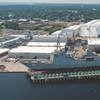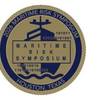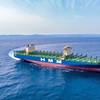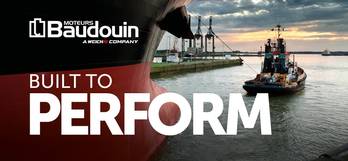NAVSEA Warfare Center Product Area - Ships and Ship Systems
By Naval Sea Systems Command Public Affairs
Product Area (PA) focus is the hallmark of the Naval Sea Systems Command (NAVSEA) Warfare Center realignment, which provides the ability for a Product Area Director (PAD) to examine and assess similar work being accomplished across all surface and undersea warfare center divisions.
PAs ensures a centralized entry for customers and for workload acceptance to increase efficiency by looking for redundancy of effort and duplication of capabilities; but, more importantly, it allows for the right work to be done by the right people at the right location.
The Ships and Ship Systems (S3) Product Area provides the Navy with greater mobility, enhanced survivability, and improved payload capability through advanced technologies and innovative systems. S3 products will be reconfigurable, highly automated, sustainable, and affordable.
"S3 refers to all platforms, and to the systems and components that are essential for the operation, mobility, and survivability of surface ships, submarines, and manned and unmanned surface and undersea vehicles," said Charles Reeves, S3 Product Area Director. "It also includes systems and expertise essential for the platform, combat, and weapon systems integration."
"All seven of S3 core equities cross Navy mission and warfare areas and align with the three pillars of Sea Power 21 - Sea Basing, Sea Strike, and Sea Shield; which integrate rely on platform capabilities-and Sea Warrior in areas of human factors engineering, manpower, training, habitability, survivability, and environment, safety and occupational health, said Reeves.
The seven S3 PA core equities are described as follows:
Ship Integration & Design covers the full spectrum of surface and undersea design-from early concept development through integration of selected technologies-optimizing the total vehicle design while weighing cost, producibility, supportability, and military effectiveness.
Hull Forms & Propulsors provides development and evaluation of new concepts for vehicles and their hulls, propulsors, control surfaces, and systems; surface and submarine propulsor design; and performance assessment to ensure each ship and ship system meets hydrodynamic mission requirements.
Machinery Systems & Components includes machinery systems design and integration; mechanical and integrated electrical power and propulsion systems; auxiliary machinery systems; hull, deck and habitability machinery systems; machinery silencing, machinery automation, controls, sensors, and hull, mechanical and electrical (HM&E) network and navigation systems; alternative power sources including fuel cells and batteries; and submarine sail and deployed antenna systems.
Structures & Materials focuses on addressing the material and structural problems of naval vehicles such as very thick materials sections, large complex structures, complex load profiles, externally pressurized vessels, corrosive environments, combat conditions, smart/multifunction applications, extended life times, and combinations of those requirements, which are not common to other military and civilian applications. The expertise provided, in large part, determines the safety and efficiency of operation, and affordability of naval platforms and their signatures and survivability.
Environmental Quality Systems ensures mission-compatible, efficient, and cost-effective environmental materials, processes and systems for Navy ships and their shore activities enabling the Navy to perform its missions worldwide in compliance with environmental laws.
Vulnerability & Survivability Systems ensure that Navy ships and their systems have the lowest vulnerability and highest survivability possible by improving survivability against weapons, developing shock hardened/damage tolerant hulls and equipment, improving damage control and the ability to fight hurt, providing weight reduction, and enabling operation in shallow water to meet the changing threat. Products and services include: fire-resistant/fire-safe materials and armor concepts; personnel safety products, such as fire, nuclear, biological, and chemical protection equipment, flotation/survival-at-sea gear; shock and live-fire trials; vulnerability and damage stability analysis, damage control systems integration, and training.
Signatures and Silencing Systems for active and passive acoustic signatures and the full range of electromagnetic signatures include (but are not limited to): the characterization of the at-sea signatures environment, modeling and simulation, stealth military effectiveness, signature databases, silencing technologies, minimization of the impact of platform signatures on sensor performance, ship vibration and air noise, signature measurement facilities, signature monitoring and control systems, training systems, and calibration and collection procedures to support measurements of the rest-of-the-world and threat-ship signatures.
One of Reeve's key goals has been to identify opportunities for warfare center collaboration and with various external organizations.
"PADs were established to ensure seamless support to sponsors and warfighters applying the full capabilities of the NAVSEA warfare centers by improving knowledge of capabilities and improving cooperation across divisions," Reeves said.
"Our S3 challenge is to fully understand and integrate mission requirements and warfighting capabilities by optimizing platform and system integration," Reeves emphasized. "We need to transition from product focus to warfighting capability focus."










